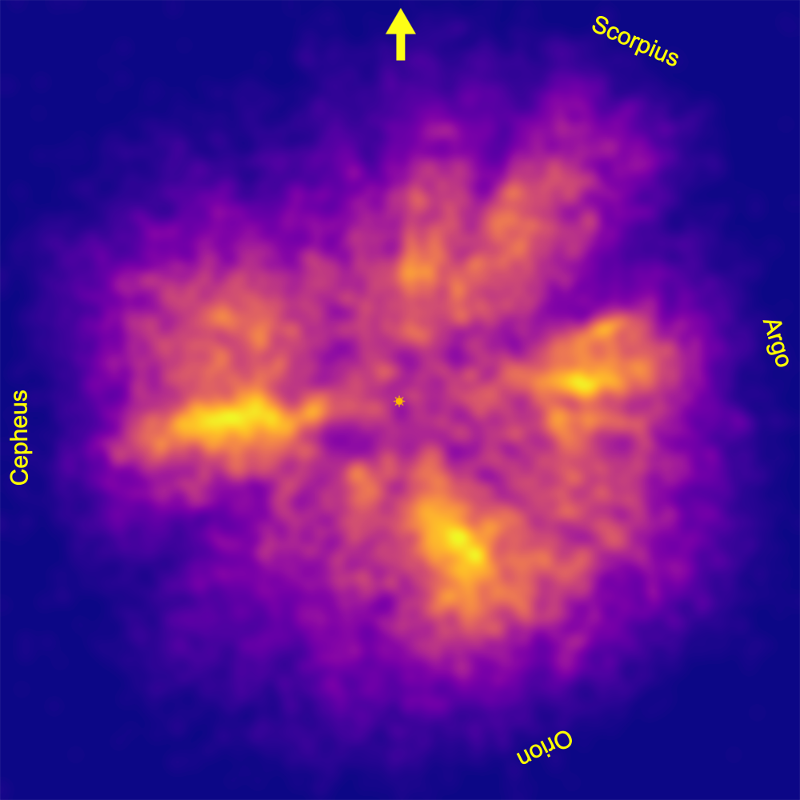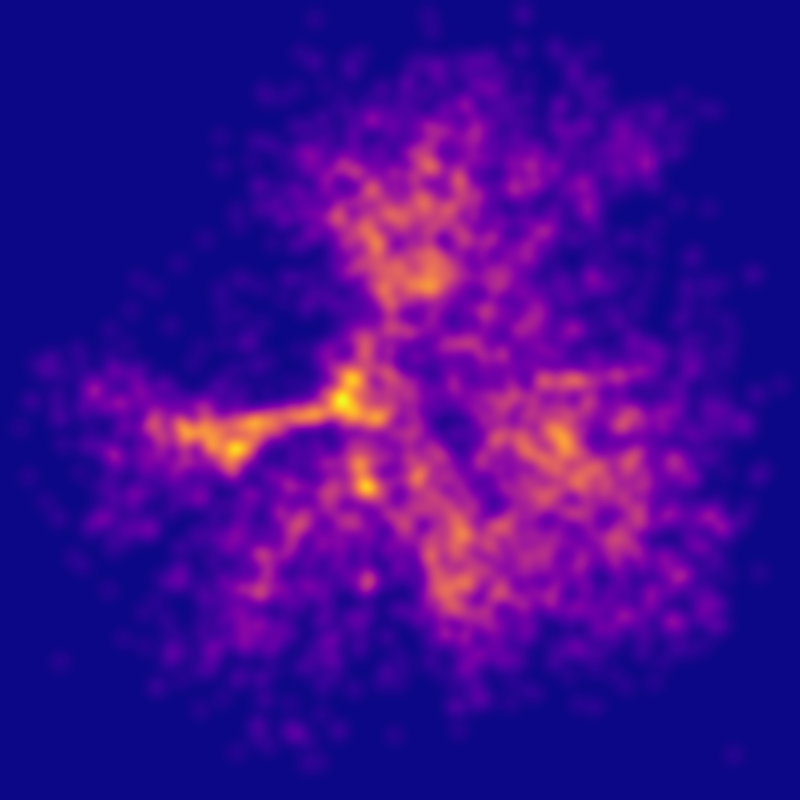In my last blog post, I drew attention to a hot star concentration that I labelled (or rather mislabelled) "Cepheus" in a temperature density image. Here is the image again:

I called the concentration Cepheus because it appears at about 95° galactic longitude and the constellation Cepheus is located around this longitude above the galactic plane.
However, it turns out that the concentration is created by a thin wall of hot stars located at a distance of -300 < z < -150 parsecs below the galactic plane. Here is a temperature density map restricted to -300 < z < -150 pc:

It looks like the "wall" (the brightest part of this image) is part of a larger complex that forms the boundary of an enormous void in the lower half of the first quadrant. Could it be a bubble?
I did a second height map animation that makes the wall and the "bubble" look quite impressive:
I did a preliminary calculation that shows that the centre of the "bubble" is somewhere in the direction of Aquarius.
Then, this morning, Gaia scientist Ronald Drimmel sent out this tweet with his latest TGAS completeness image:
Map of completeness of TGAS subsample in #GaiaDR1. #GaiaSprint pic.twitter.com/iZas0mSlTA
— Ronald Drimmel (@rdrimmel) October 27, 2016
The biggest gap is ... somewhere in the direction of Aquarius.
So there is a void in TGAS in the lower first quadrant, but in the data, not in space! Gaia had simply not scanned that part of the sky much yet when the first data release was prepared and TGAS is missing most stars in that direction.
The wall around the void appears simply because there are two nearby gaps in the TGAS data below the galactic plane and the "wall" is the narrow region in between.

I have been thinking of TGAS as a donut that starts to fade out around 600 pc with a hole around the Sun caused by a lack of bright (as seen from Earth) and high proper motion stars. And to a first approximation it is - but a donut with a few bites taken out of it.

